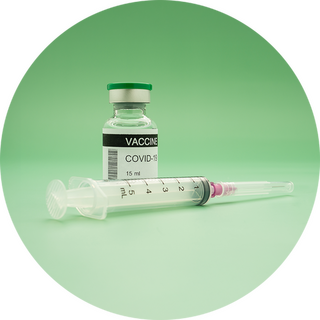By harnessing the power of living organisms, biomanufacturing offers sustainable alternatives to traditional industrial processes, addressing global challenges such as climate change, resource scarcity, and food security. This article explores the advancements, applications, and challenges of biomanufacturing, with a focus on its potential to drive the bioeconomy and create a sustainable future.
Advancements in biomanufacturing
Biomanufacturing has evolved significantly due to advancements in biotechnology and synthetic biology:
- Precision fermentation
Precision fermentation enables the production of complex molecules, such as proteins and enzymes, by programming microbes. Companies like Perfect Day use this technology to create animal-free dairy proteins. - CRISPR and gene editing
Gene-editing tools like CRISPR have revolutionised the engineering of microbes, plants, and cells, enabling the production of bio-based materials with high efficiency. - Bioreactor innovations
Next-generation bioreactors have increased the scalability of biomanufacturing. Modular and automated systems allow for flexible and cost-effective production. - Automation and AI integration
Artificial intelligence accelerates the design-build-test cycle in biomanufacturing, optimising processes and reducing time to market. Companies such as Zymergen and Ginkgo Bioworks leverage AI to design high-performing microbial strains.
Applications of biomanufacturing

Building public trust in biomanufactured products, particularly in food and healthcare, requires transparent communication and robust safety standards.
Biomanufacturing is revolutionising diverse sectors of the global economy:
- Food and agriculture
- Alternative proteins
Precision fermentation produces plant-based and cell-cultured meat, offering sustainable alternatives to traditional livestock farming. - Sustainable farming inputs
Engineered microbes produce biofertilisers and biopesticides, reducing the environmental impact of agriculture.
- Alternative proteins
- Healthcare and pharmaceuticals
- Biologic drugs
Biomanufacturing enables the production of complex biologics, such as monoclonal antibodies and insulin. - Vaccines and therapies
Rapid development and scalable production of vaccines, such as mRNA COVID-19 vaccines, exemplify biomanufacturing’s impact on healthcare.
- Biologic drugs
- Industrial and consumer goods
- Bioplastics
Biomanufactured plastics derived from renewable sources provide an eco-friendly alternative to petroleum-based plastics. - Bio-Based textiles
Companies like Bolt Threads produce biofabricated materials, such as spider silk, for sustainable fashion.
- Bioplastics
- Energy and environment
- Biofuels
Biomanufactured fuels, including ethanol and biodiesel, offer renewable energy alternatives. - Bioremediation
Engineered microbes break down pollutants, such as oil spills and plastics, contributing to environmental restoration.
- Biofuels
Biofuels: Biomanufactured fuels, including ethanol and biodiesel, offer renewable energy alternatives.

The bioeconomy’s global impact
The bioeconomy, driven by biomanufacturing, has the potential to address pressing global challenges:
- Economic Ggrowth
The bioeconomy is projected to exceed $2 trillion by 2030 (OECD, 2023). Investments in biomanufacturing infrastructure and innovation will create high-value jobs and spur economic growth. - Sustainability goals
Biomanufacturing aligns with the UN Sustainable Development Goals (SDGs) by promoting responsible consumption, climate action, and clean energy. - Decentralised production
Portable biofoundries enable decentralised biomanufacturing, empowering local economies and reducing supply chain dependencies. - Circular economy
Biomanufacturing supports a circular economy by creating materials that are renewable, biodegradable, and recyclable.
The UK’s leadership in biomanufacturing
The UK is emerging as a leader in the bioeconomy, supported by strategic policies and investments:
- Bioeconomy strategy (2018)
The UK government’s strategy outlines a vision to transform the nation into a global leader in bio-based industries. It prioritises innovation, commercialisation, and sustainability. - Innovate UK funding
Innovate UK provides funding for biomanufacturing start-ups and research, accelerating advancements in bio-based technologies. - The BioPilots UK Network
This collaborative network of biomanufacturing facilities supports scale-up and commercialisation, bridging the gap between lab research and industrial production. - Oxford and Cambridge ecosystem
Leading institutions such as the University of Cambridge and the University of Oxford drive cutting-edge research in synthetic biology and biomanufacturing.
Challenges in scaling biomanufacturing
Despite its potential, biomanufacturing faces several challenges:
- Cost and scalability
Scaling biomanufacturing processes to industrial levels remains expensive and complex. Developing cost-efficient bioreactors and optimising microbial strains are key priorities. - Infrastructure gaps
Establishing robust biomanufacturing infrastructure requires significant investment, particularly in emerging markets. - Regulatory hurdles
Regulatory frameworks for biomanufactured products vary across regions, creating barriers to market entry. - Public perception
Building public trust in biomanufactured products, particularly in food and healthcare, requires transparent communication and robust safety standards.

Case studies in biomanufacturing
- Perfect Day
Perfect Day uses precision fermentation to produce animal-free dairy proteins, offering sustainable alternatives to traditional dairy products. - Moderna
Moderna’s use of biomanufacturing to produce mRNA vaccines highlights its role in addressing global health crises efficiently. - BioAmber
BioAmber produces bio-based succinic acid for use in plastics, textiles, and coatings, demonstrating the versatility of biomanufacturing in industrial applications.
Advances in synthetic biology will enable the creation of new bio-based materials with enhanced properties, such as durability and biodegradability.
Future directions in biomanufacturing
- Integration with AI and automation
AI will optimise biomanufacturing processes, from strain design to production, reducing costs and accelerating innovation. - Expanding bio-based materials
Advances in synthetic biology will enable the creation of new bio-based materials with enhanced properties, such as durability and biodegradability. - Global collaboration
International partnerships will drive the development and adoption of biomanufacturing technologies, fostering a unified approach to global challenges. - Decentralised biofoundries
The development of portable and modular biomanufacturing systems will decentralise production, enhancing accessibility and resilience.
Conclusion
Biomanufacturing is revolutionising industries by providing sustainable, bio-based alternatives to traditional processes. By addressing challenges related to cost, scalability, and regulation, biomanufacturing can unlock the full potential of the bioeconomy. The UK’s strategic investments and leadership in this field position it as a key player in driving global innovation. As the world faces increasing environmental and resource challenges, biomanufacturing offers a path to a greener, more equitable future.